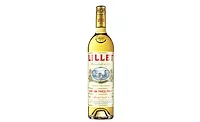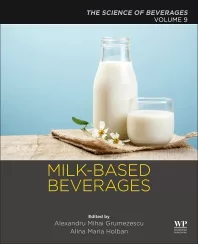Survey finds wine moves to new occasions
Millennials, baby boomers view category differently
Whether it's relaxing at home, dining out at a restaurant or celebrating with friends and family, American consumers are enjoying wine in a wider variety of occasions. A recent report titled “The 2015 Gallo Consumer Wine Trends Survey,” commissioned by Modesto-Calif.-based E. & J. Gallo Winery, found that 85 percent of frequent wine drinkers now consider wine as an appropriate beverage for casual and formal settings alike. One-thousand frequent wine drinkers between the ages of 21 and 64 were surveyed as a follow-up to the 2014 survey of the same name, which aims to capture the current state of American wine-drinking attitudes and behaviors, the company says.
"By going beyond the findings of last year's inaugural Gallo Consumer Wine Trends Survey, we are developing a more complete and robust profile of wine drinkers in the United States," said Vice President of Marketing and third-generation family member Stephanie Gallo in a statement. "At E. & J. Gallo Winery, we produce unique offerings that cater to Americans' evolving wine preferences at the dinner table, in their backyard and everywhere in between."
The survey found that even while Americans are bringing wine into a growing number of occasions, frequent wine drinkers still stick to what they know. When presented with a list of 40 well-known wine brands across a range of price levels, respondents indicated that they purchased an average of 3.2 brands on a regular basis, the company says. However, Americans showed overall interest in a diverse range of wine styles, packaging formats and sizes. These consumers also shed light on their perceptions of wine and wine culture, it adds.
The millennial versus baby boomer experience
According to the survey, 82 percent of all frequent wine consumers enjoy between one and five glasses a week; however, their experience varies significantly by demographic, the company says. The survey found that millennials are twice as likely to drink wine when socializing with friends (22 percent versus 11 percent), whereas baby boomers are 50 percent more likely to drink wine during a family meal (33 percent versus 22 percent). Millennials also are four times more likely to select a wine based on its label, more frequently looking for personality and originality. Baby boomers, by contrast, often look to the label for information such as region of origin and product details, it adds.
Wine tribes
The company notes that when respondents were asked to classify themselves as a type of wine consumer, 35 percent of survey respondents chose "wine adventurer," indicating a desire to explore options and have new experiences with wine.
Millennials were more likely to categorize themselves as "wine novices" (30 percent), while baby boomers often considered themselves "wine traditionalists" (27 percent) or "wine brand loyalists" (13 percent).
Interestingly, only 3 percent of total respondents self-identified as "wine snobs," making the case that most wine drinkers aspire to enjoy wine on their own terms rather than following a prescriptive set of traditional cultural rules, it adds.
Wine fears are minimal
A new area of interest explored in the 2015 survey was common fears among wine drinkers. Overall, frequent wine consumers didn't claim to have many concerns; however, four in 10 were frightened by the prospect of mispronouncing a wine's name, the company says.
Millennials reported a greater level of "wine fear" overall than older drinkers, stating that 34 percent feel awkward when asked by a server to "taste" wine at a restaurant, 34 percent are afraid their wine selection will be judged by others and 31 percent feel uncomfortable talking about wine with others.
However, 42 percent of all survey respondents acknowledged that wine is becoming less formal. By continuing to remove these barriers from the category, the wine industry will welcome new friends and continue its expansion into everyday occasions, the company says.
Rosé any day
Almost twice as likely to purchase rosé in comparison to baby boomers, millennials are clearly driving purchasing trends for blush wines, the company says.
Interest among rosé drinkers noticeably swells as early as April (42 percent), peaks in June, July and August (ranging from 70 to 75 percent) and holds strong through September (52 percent).
This growing passion for rosé beyond the summer season is indicative of millennials' interest in a more diverse selection of wine overall, according to the company.
Portable packaging
Portability and convenience also were notable points of differentiation for a variety of alternative packaging options, the company says.
It notes that 37 percent of survey respondents identified boxed wine as a convenient option and 54 percent would be open to using casual boxed wine as their "go-to" in the refrigerator. Similarly, 32 percent of consumers recognized wine in a can as being portable and perfect for picnic or cookout scenarios in which bringing a bottle of wine would be inconvenient.
Among fans of alternative packaging, outdoor events remained the primary occasion for the use of these products, which include 187-ml bottles (42 percent), Tetra packs (43 percent) and cans (60 percent).
The “2015 Gallo Consumer Wine Trends Survey” was conducted by Libran Research & Consulting among 1,000 nationally representative U.S. wine-drinking adults ranging in age from 21 to 64. Participants were recruited via a national online panel between the dates of Sept. 2 and 4.
Looking for a reprint of this article?
From high-res PDFs to custom plaques, order your copy today!







